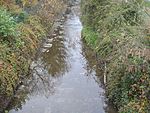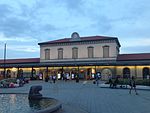Grassobbio
Cities and towns in LombardyMunicipalities of the Province of BergamoProvince of Bergamo geography stubs

Grassobbio (Bergamasque: Grahòbe or Grassòbe) is a municipality (comune) in the Province of Bergamo, which consists of 6487 of inhabitants, in the Italian region of Lombardy. Grassobbio is located in the orographical right side of Serio river and around 8.5km far from the main city of Bergamo. Grassobbio borders the following municipalities: Cavernago, Orio al Serio, Seriate, Zanica.
Excerpt from the Wikipedia article Grassobbio (License: CC BY-SA 3.0, Authors, Images).Grassobbio
Via Venticinque Aprile,
Geographical coordinates (GPS) Address Nearby Places Show on map
Geographical coordinates (GPS)
| Latitude | Longitude |
|---|---|
| N 45.65 ° | E 9.7166666666667 ° |
Address
Via Venticinque Aprile (Via XXV aprile)
Via Venticinque Aprile
24068
Lombardy, Italy
Open on Google Maps










